InEight Estimate
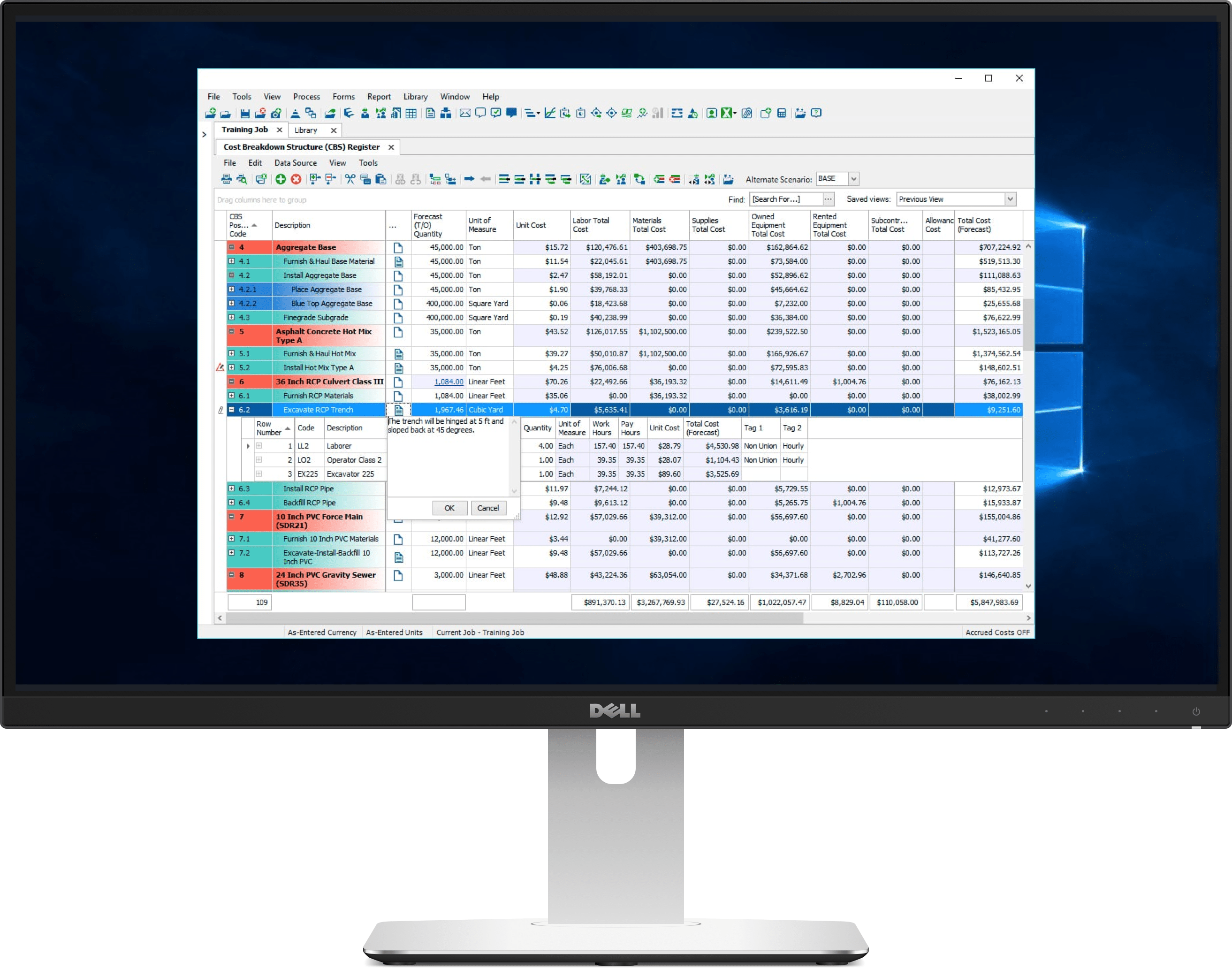

Goal: Help optimize this legacy product’s UI as well as implement new features and rework existing functions.
What I did: Worked with product and development and helped bridge the gaps between InEight’s product and the client’s, paving the way for entry into the vertical building industry.
How long it took: 3 month contract.
What is Estimate?
InEight® Estimate sets the standard for accuracy, performance and multi-user collaboration throughout the entire estimating process. InEight Estimate gives you the confidence to know that the job can be built for the budgeted cost.
Acclaimed for its flexibility and depth of features, InEight Estimate can be used to create top-down or bottom-up estimates for projects of any size, across all construction markets and disciplines.
InEight Estimate is a decades old product that has helped hundreds of estimators and contractors mitigate risk and create accurate estimates for their construction projects large and small.
The Task
One client in particular has contracted InEight to help bridge gaps between their existing product and InEight Estimate, specifically in reference to their closing process, when estimators are receiving quotes in the final minutes prior to when a bid is due.
Upon success, this would lead to Estimate being used in an industry that InEight has had their eyes on for a long time, vertical building.
Prior to my arrival at InEight, research such as contextual inquiry and interviews had already taken place. We then brought the clients in for a several day-long workshop were they helped create affinity diagrams of their process. They took quotes that were printed on cards from the contextual inquiry, and placed them in the right area of the affinity diagram.
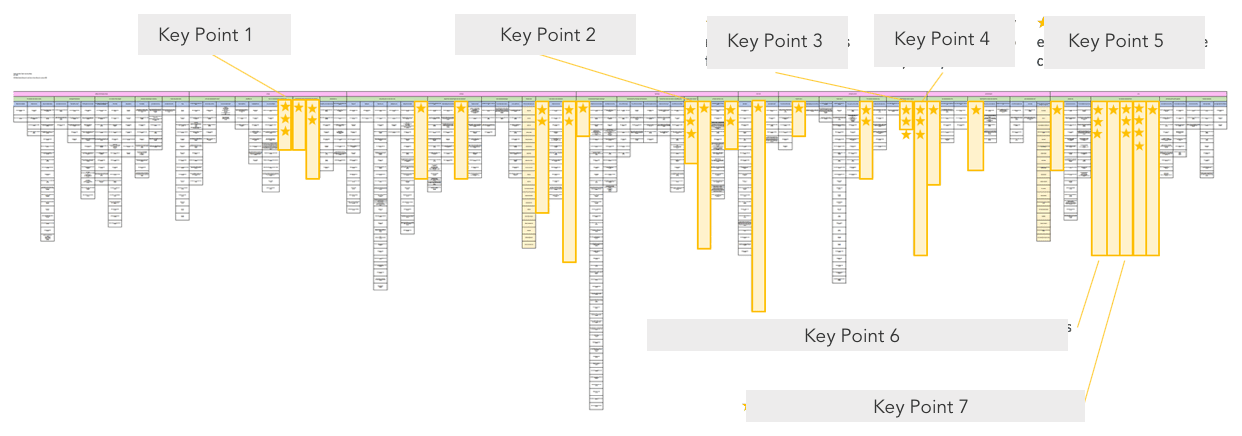
Together with the UX lead, we documented the workflow of the client’s estimators using their current software. We analyzed how and why they perform the actions that they do, to help us understand where the true problems lie in their current workflow and how we may be able to help close those gaps.
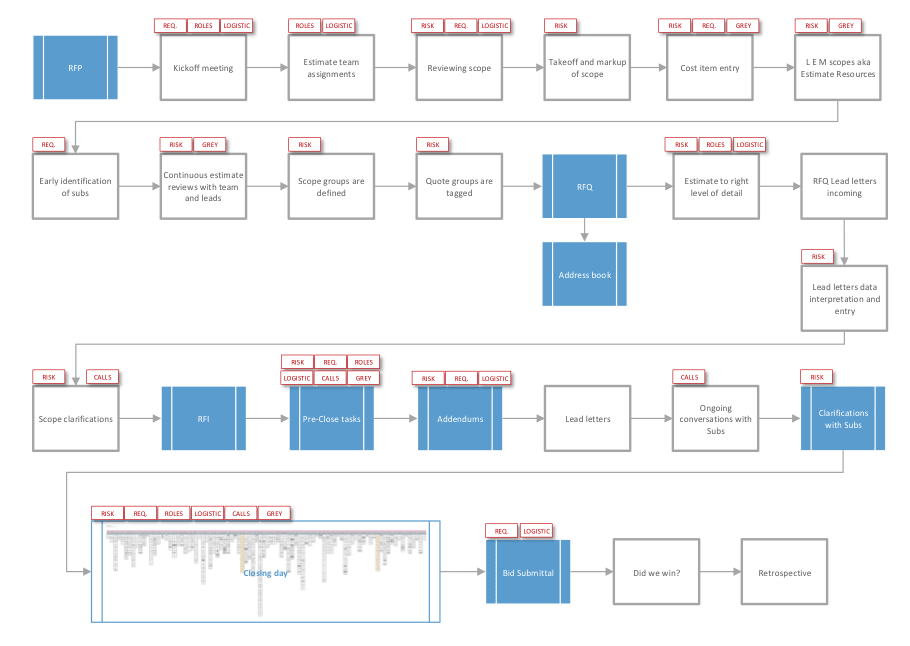
Once we identified the pain points in the client’s current system, we then documented the workflow of InEight’s product as it stands today. This allowed us to do the same thing we did with the client’s workflow, identify where in the product needs improvement.
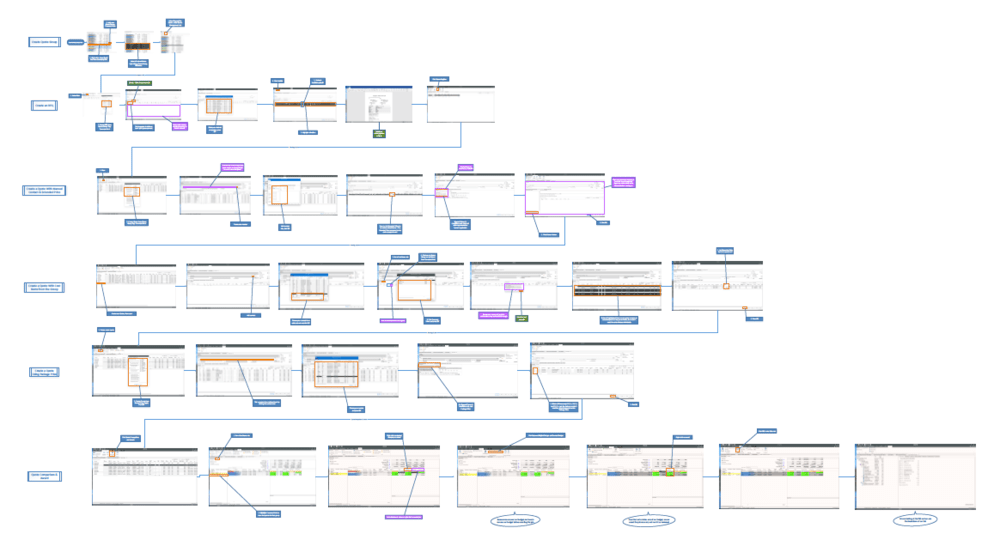
Through user flows and stories, we were able to gain more information from the process and could empathize with the stress that takes place during the dreaded last minute quoting time period.
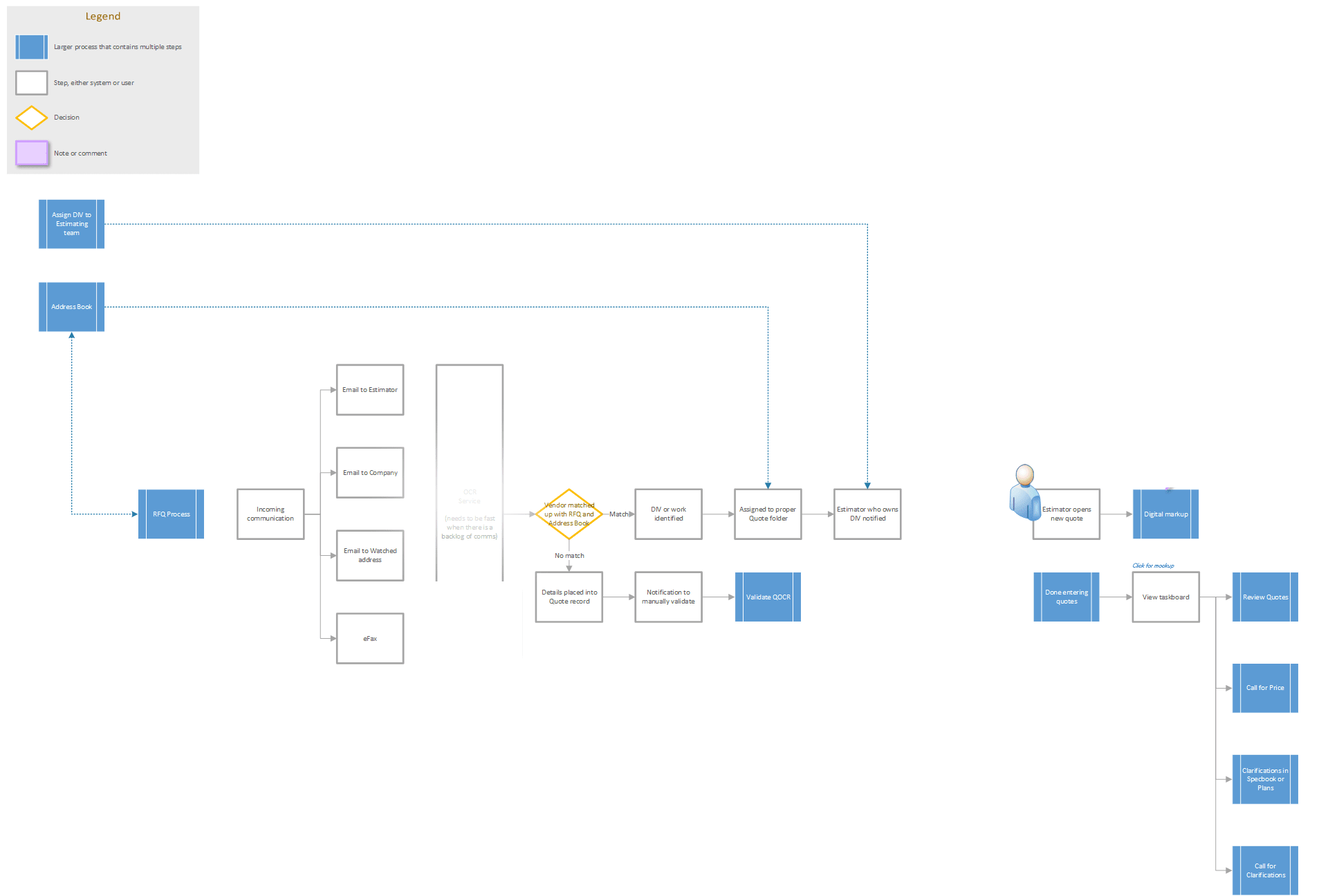
We began the design phase by sitting down with pen and paper after we absorbed all the knowledge we attained during the client’s workshop, and started sketching out different ways of reorganizing the main screen where most of the final adjustments and comparison of quotes take place.
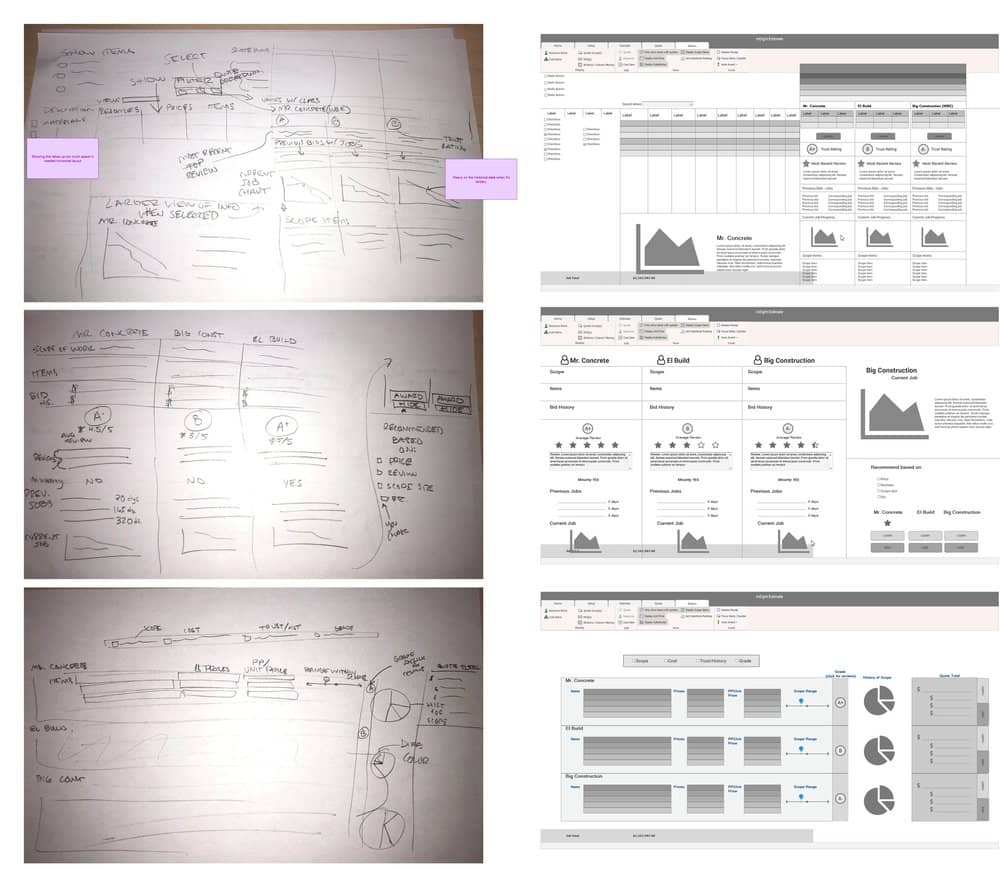
Through each iteration, I would meet with the Product Manager and discuss what features and actions were needed to reach our goals as well as gain more knowledge of the complex capabilities of the product.
By creating different options for each action/new feature, we were able to have deep discussions about our choices and how each change would influence our following ideas.
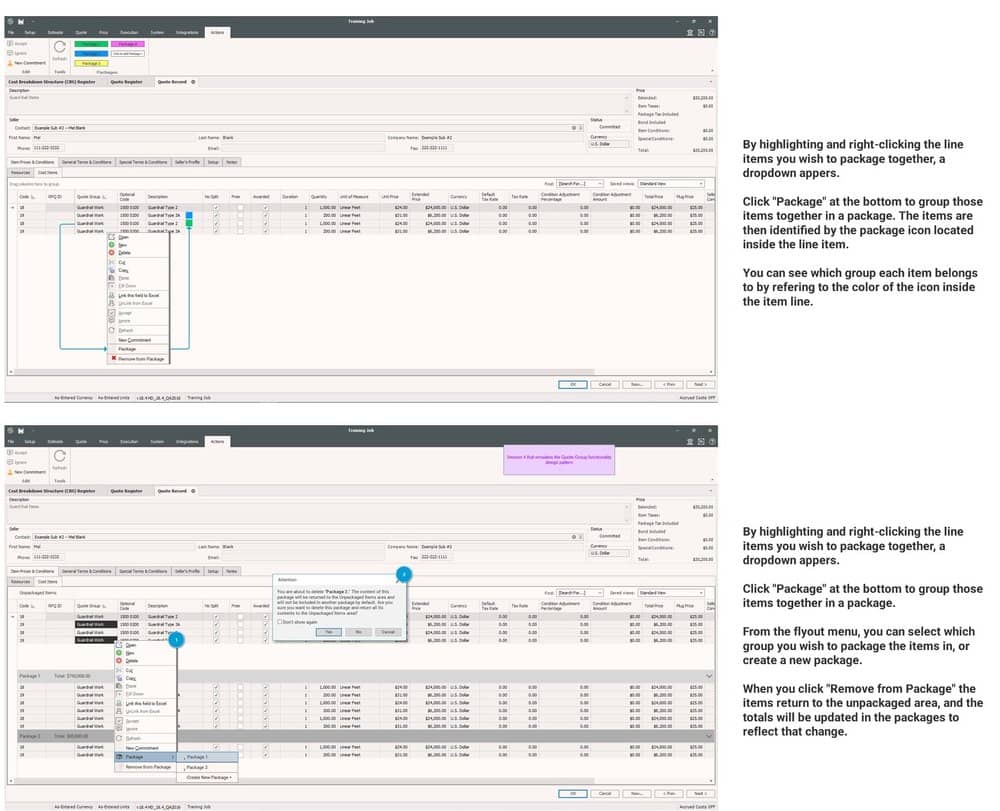
Not only did we need to figure out how to bridge the gaps between our product and the client’s, we also needed to modify our product in places that help fit our goals without tossing our existing users to the side.
We presented several different options and iterations of the overall changes, and based on the feedback we received, headed back to the drawing board to continue to refine and document our solutions.
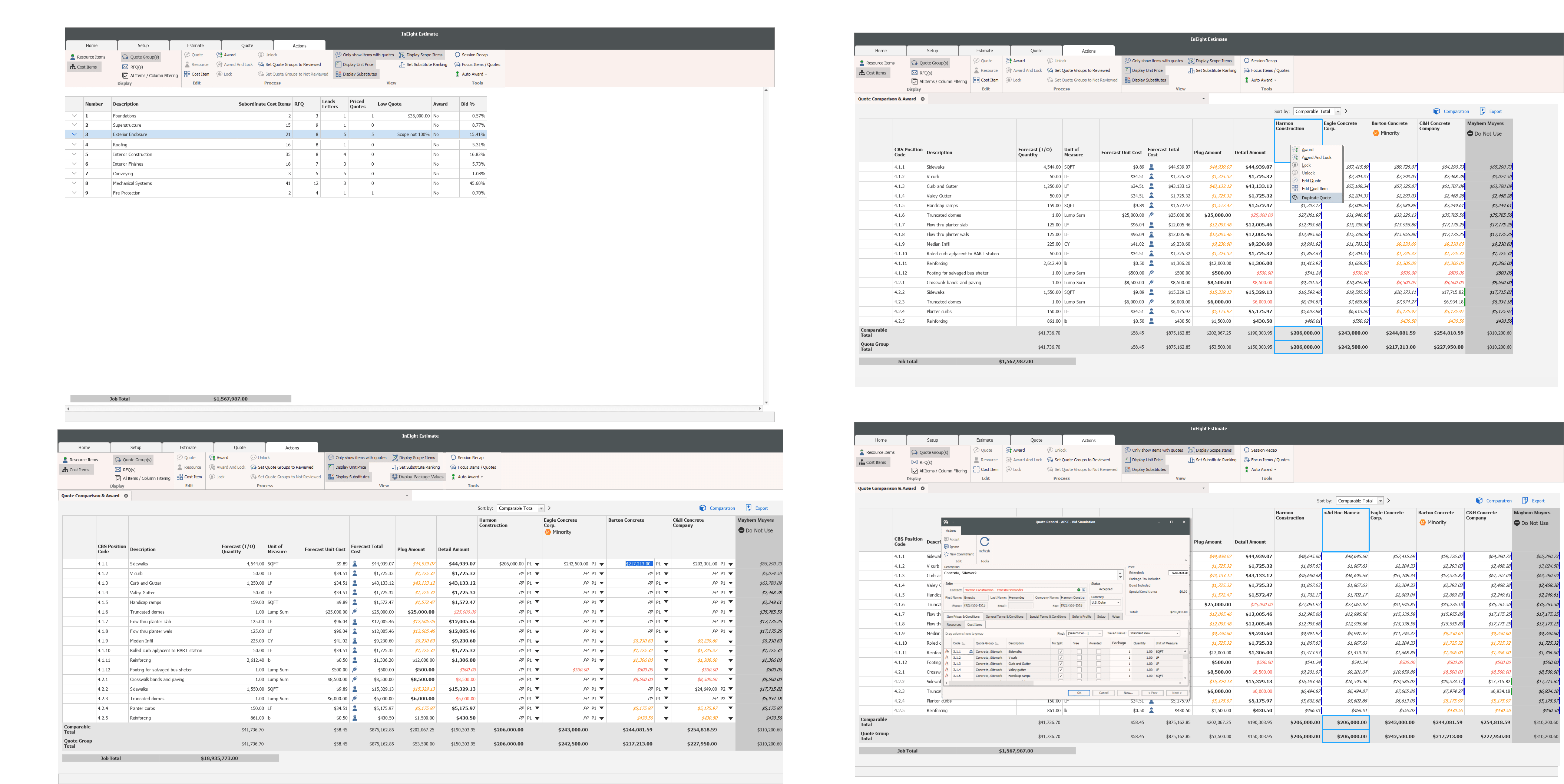
Next steps continuing this project would be to continue meeting with the client and presenting our progress to make sure we are on the right path.
During that time, we can meet with our development team and go over our product documentation with them, to figure out a reasonable timeline to get these changes out the door.
Finally, we can get our timeline approved with the client, and start building. All the while making adjustments as needed to the solutions to fit both the client’s goals and development’s capacity.
• Understanding the medium you are designing for is essential. As a designer I needed to check in with the Development team often to make sure the different design iterations were on the right path from a technical standpoint.
• Sometimes the best way to solve a problem isn’t what one would assume, or maybe the problem’s origin is not as obvious as they thought.
• It’s important to recognize the interactions between each feature, because we don’t want to move forward with an idea only to have it react negatively with another existing action.